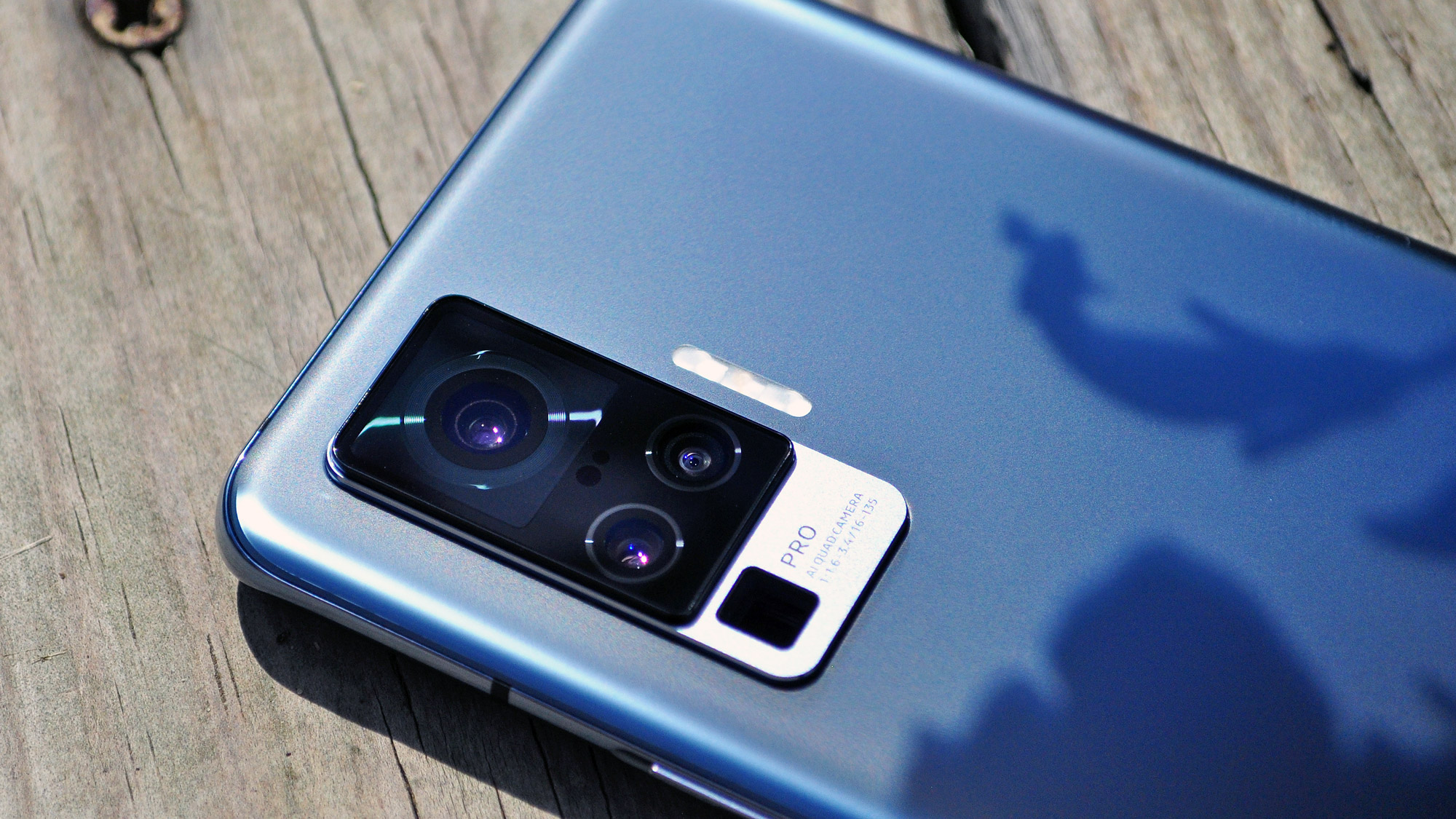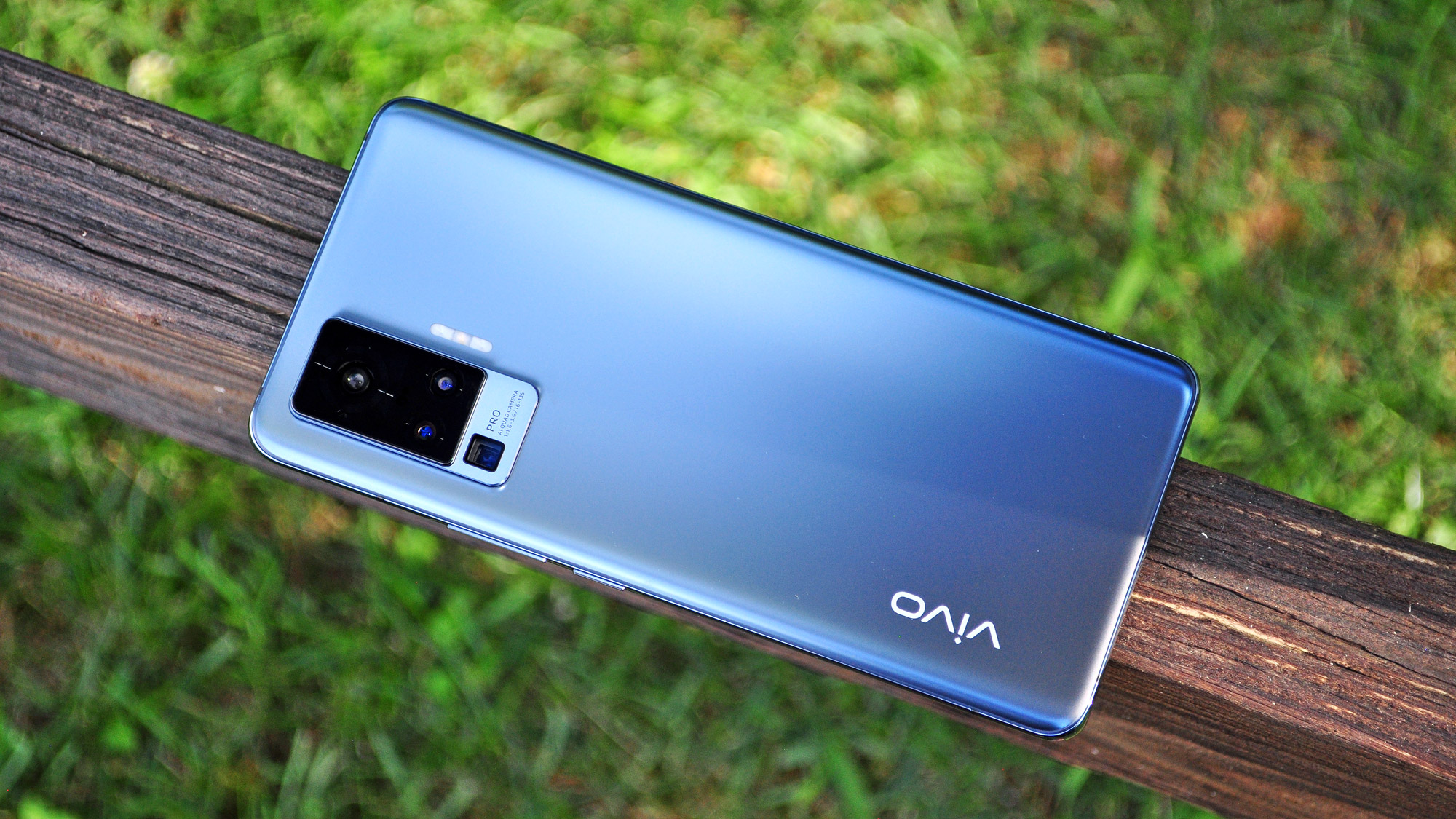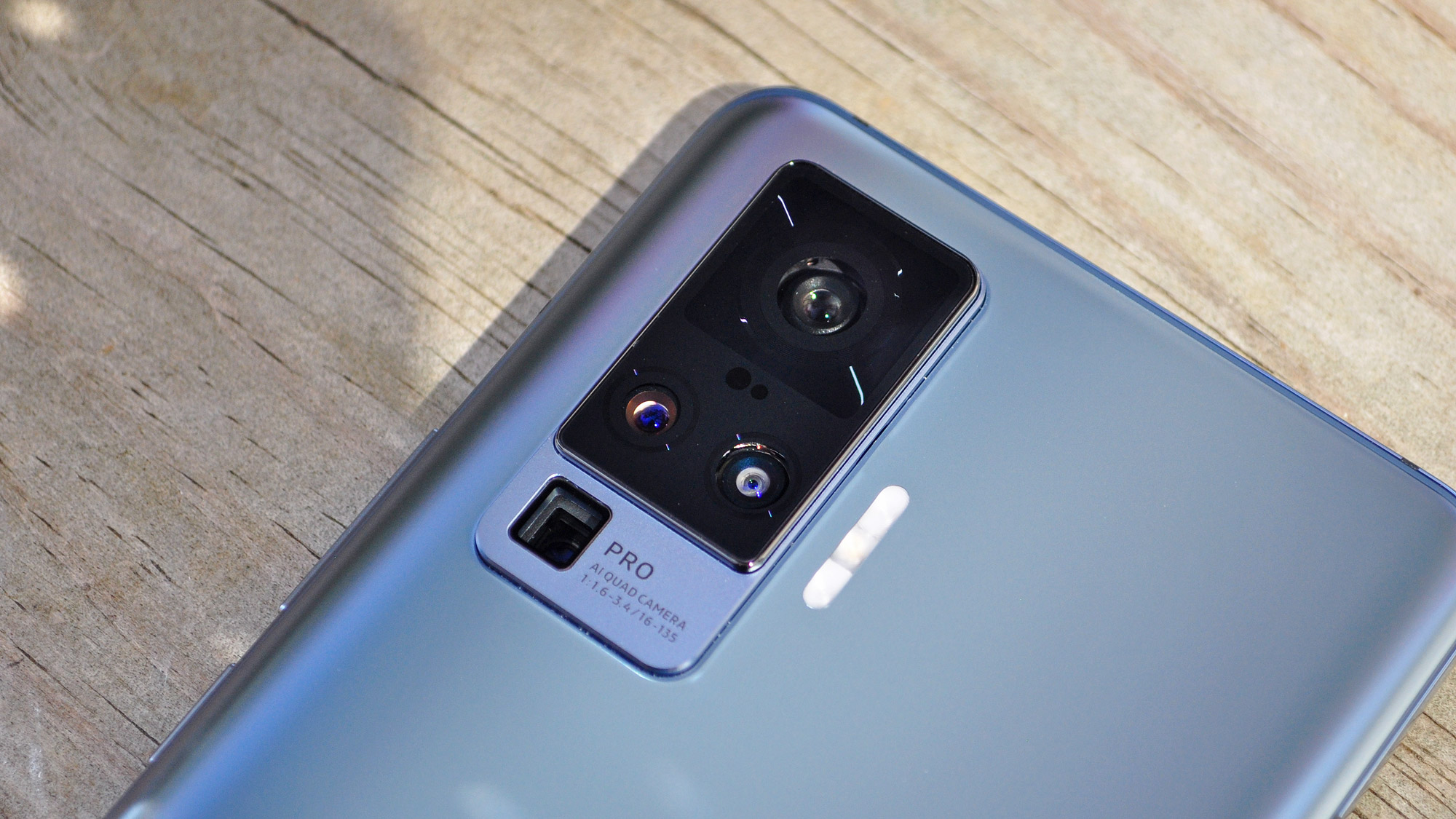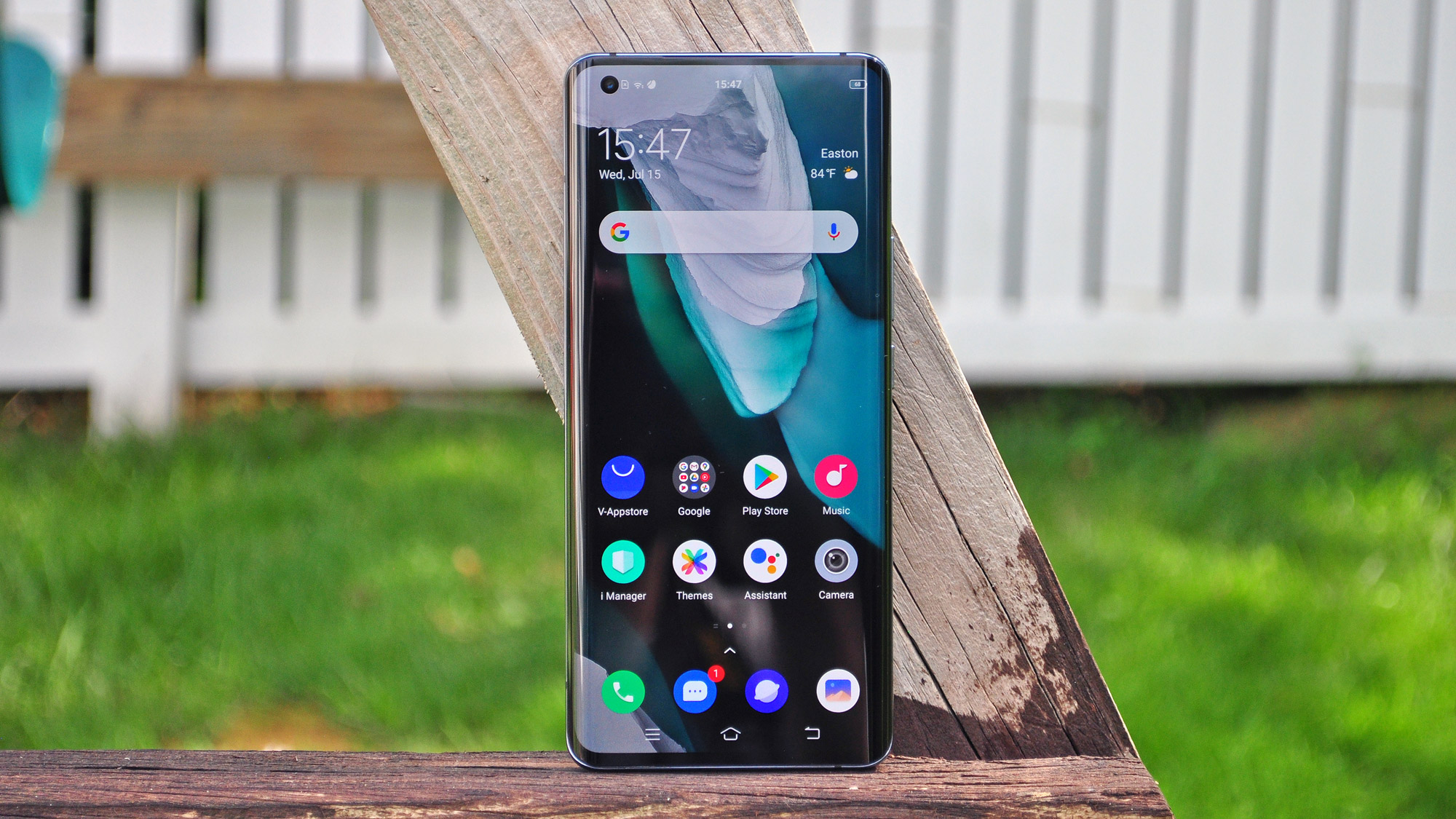Vivo X50 Pro gimbal camera tested — and Galaxy Note 20 should be worried
The first-ever phone with a built-in gimbal puts iPhone 12, Galaxy Note 20 and Pixel 5 on notice

Price: 4,298 yuan (~$615)
OS: Android 10 with FunTouch OS 10.5
Display: 6.56-inch OLED (2376x1080; 90Hz)
CPU: Snapdragon 765G
RAM: 8GB
Storage: 128GB, 256GB; Not expandable
Rear camera: 48MP main (ƒ/1.6); 8MP ultrawide; 13MP "Bokeh" (ƒ/2.48); 8MP 5x zoom
Front camera: 32MP
Battery: 4,315 mAh
Size: 6.24 x 2.86 x 0.31 inches
Weight: 6.4 ounces
Phone makers are forever locked in a battle of one-upmanship when it comes to camera quality. And although we've seen lots of improvements over the past several years — deep learning HDR, periscope lenses and ultra-high megapixel sensors — it seems as though the innovations are only getting more absurd.
What's more, some of these breakthroughs are coming from unlikely sources. Case in point: the new Vivo X50 Pro, a phone announced today (July 16) that was released in China earlier this month and will come to India and select countries in Eastern Europe in the coming days.
The X50 Pro wouldn't seem to be a particularly innovative device, at least in terms of its numbers. This phone costs the equivalent of about $615 in China and carries a Snapdragon 765G chipset, which is a step down from the Snapdragon 865 processors in true Android flagships. But despite those modest numbers, the Vivo X50 Pro does have one party piece no other phone can claim right now: a gimbal camera system.
- The best Android phones at every price and size
- OnePlus Nord: Everything we know about OnePlus' new phone
Now, all of the best camera phones have some fashion of electronic or optical image stabilization, which is designed to correct for hand shake when you shoot photos or videos. Think of Vivo's micro-gimbal system as a sort of supercharged version of that. It's bolstered by a magnetic frame and a double-ball bearing suspension system which enables three degrees of tilt on the X and Y axes.
Vivo says that's three times better than what conventional OIS can do, and the result should be smoother, less shaky videos and crisper photography, especially in low-light scenarios where the phone is forced to keep the shutter open for long amounts of time. We got our hands on an X50 Pro for ourselves to find out if the gimbal camera really lives up to its promise.
Vivo X50 Pro: Gimbal photography
Modern smartphones are very good at compensating for slight twitches when capturing still images, so I wasn't surprised to find that Vivo's gimbal system on the X50 Pro doesn't greatly lessen motion blur compared to Samsung's more conventional OIS-based approach in the Galaxy S20 Plus — at least in most shooting situations.
If you look very carefully, you might be able to suss out a difference. For example, I took a set of pictures on both devices with purposefully wobbly hands, trying to focus in on a pink flower. Viewed in full, you may not be able to see any discrepancies in terms of sharpness. However, crop in, and the ghosting and smearing that plagues object boundaries in the S20's attempt, like the petals' edges, is somewhat mitigated by the X50 Pro's new-fangled camera stack.
Sign up to get the BEST of Tom's Guide direct to your inbox.
Get instant access to breaking news, the hottest reviews, great deals and helpful tips.
I went indoors into a rather dim room to observe how the X50 Pro would respond if I used its Pro camera mode and ratcheted the shutter speed up to 1/8 of a second while shooting some model cars. The shutter being kept open for longer allows more room for error, because there's more time to record errant movements.
Again, compared to the Galaxy (which was also set to 1/8), you'll find slightly less blurriness across the scene. This is most evident in the rear-view mirror inside the white Ford at the right, as well as the rear wheel of the red Viper on the left. After snapping these images, I tried to see how ambitious I could be with long shutter speeds on the X50 Pro before I noticed a degradation in quality. Sure enough, at 0.3 seconds, I observed some added shake enter the mix.
Vivo X50 Pro: Gimbal video
If you really want to see the X50 Pro's gimbal system prove its worth, record some video. While the advantage posed by the gimbal when shooting stills wasn't profound enough to make me wish I had one in my iPhone 11 Pro, I'm happy to report that Vivo's tech greatly enhanced moving pictures.
I recorded brief, identical videos in my backyard with the X50 Pro and Galaxy S20 Plus, again subtly shaking my hands every step of the way. The results really do speak for themselves; there are hints of movement present in the Vivo phone's rendition, but they're largely diminished. It's an impressive performance compared to the S20 Plus' recording, where blips and judders are much more prevalent — though the Galaxy's image stabilization system did well to stamp out what it could.
Now, I know that simply watching a video created with the X50 Pro lends an incomplete understanding of precisely what's happening behind the scenes. Thankfully, Vivo has built an excellent motion meter of sorts into its camera app, to provide a sense of what the gimbal and various stabilization systems are doing to keep your footage the right way up.

Pay attention to the white dot at the center of those two concentric circles in the viewfinder. While the dot stays within the first ring, the camera is mitigating movement; when it leaves that space and swings toward the outer ring, the motion is too intense for it to quell, and that's when shakiness is present. As you can see, the gimbal is working hard to soften all the jolts.
Vivo X50 Pro: Quad-lens camera

Aside from the gimbal, the X50 Pro's camera system is fairly comprehensive for such a reasonably-priced phone. The main lens that the gimbal is attached to captures 48 megapixels and has an ƒ/1.6 aperture, which is ideal for letting a ton of light in to improve exposure in unfavorably dim conditions. Below that is an 8-MP ultra wide lens with a 120-degree field of view; 13MP "Bokeh" sensor and 8MP periscope lens capable of 5x lossless zoom.
If anything, the most disappointing thing about the gimbal is that it only works on the primary lens. Mitigating shake is probably most valuable when shooting at a high zoom value, though, of course there's no way for Vivo to have combined the gimbal system with the periscope at this point in time. The technology is just too young.

In fact, Vivo's ability to package such an intricate system in such a small space is one of its most laudable achievements with the X50 Pro. The addition of a gimbal necessitated a specially-folded ribbon cable that wouldn't cause twisting or distortion that might impede the gimbal's intended motion. And even despite that, the whole module only adds 4.5 millimeters of thickness to the back of the device, which is pretty scant in the grand scheme of things.
In fact, I love the way the X50 Pro's rear camera looks. The emphasis on that gimbal-equipped lens at the top, taking precedence over all the others, lends a uniquely professional and high-tech quality to the handset's design. As much as I rail against the need for every flagship phone to have three or more camera lenses, some companies are coming up with really clever ways of packaging them aesthetically. I even like the way the Samsung Galaxy Note 20 Ultra's massive camera bump looks, in spite of all the criticism it's inspiring.
Vivo X50 Pro: Outlook

Speaking of the Note 20, and looking forward to the iPhone 12, there's no doubt in my mind both upcoming phones will have excellent cameras. But it's a bit disappointing to see companies like Vivo — which don't typically sell their devices in the West — innovating with creative solutions like this gimbal system, while the industry's established players are too cautious to match their ambition.
I don't take much video on my phone, because I always hate the muddy, juddery mess that phone-recorded videos often become — but I think I would be more inclined to shoot if I had Vivo's tech at my disposal. Even in this first iteration, it's already surprisingly effective. Let's hope Vivo keeps developing it, and other manufacturers take notice.
Adam Ismail is a staff writer at Jalopnik and previously worked on Tom's Guide covering smartphones, car tech and gaming. His love for all things mobile began with the original Motorola Droid; since then he’s owned a variety of Android and iOS-powered handsets, refusing to stay loyal to one platform. His work has also appeared on Digital Trends and GTPlanet. When he’s not fiddling with the latest devices, he’s at an indie pop show, recording a podcast or playing Sega Dreamcast.
